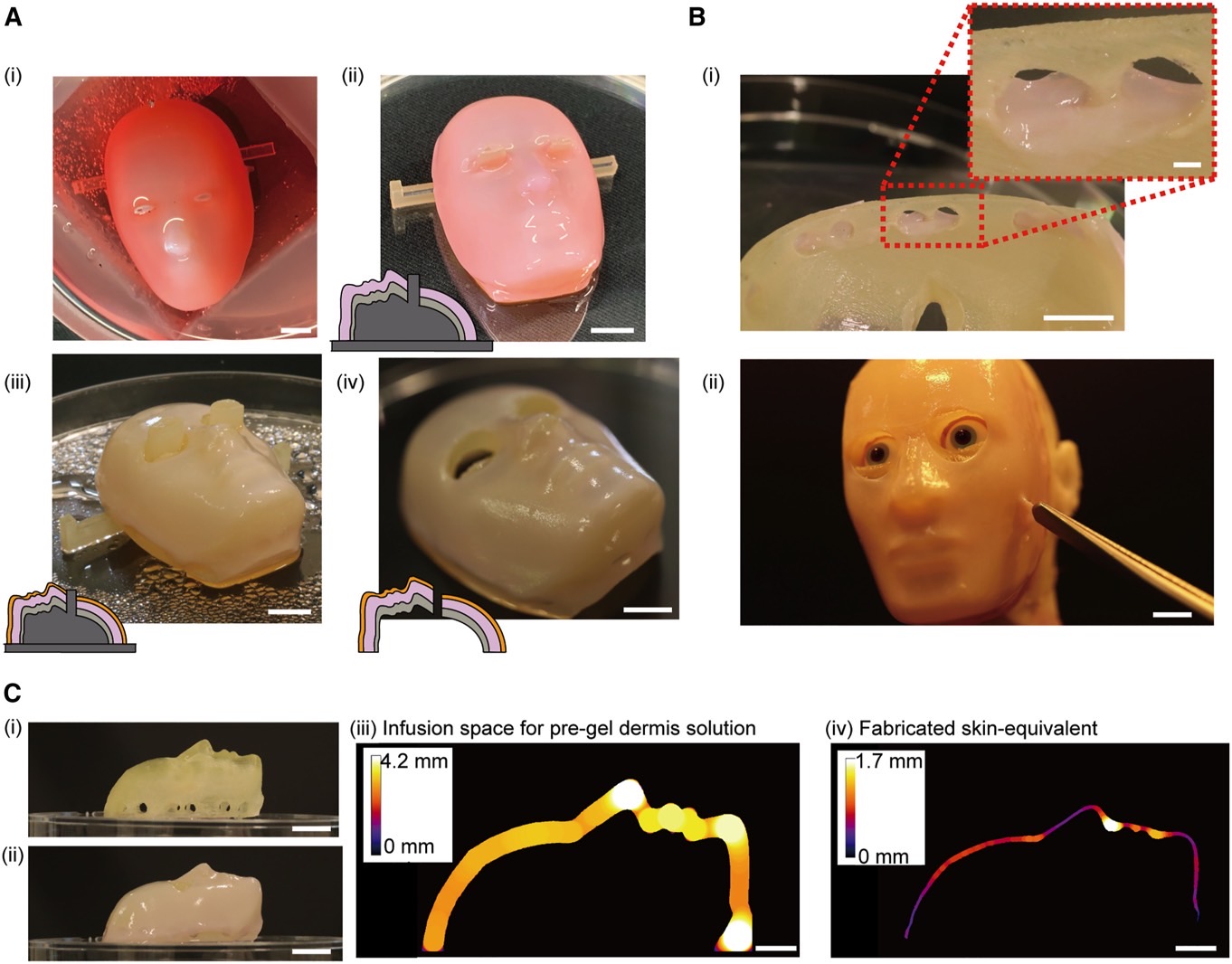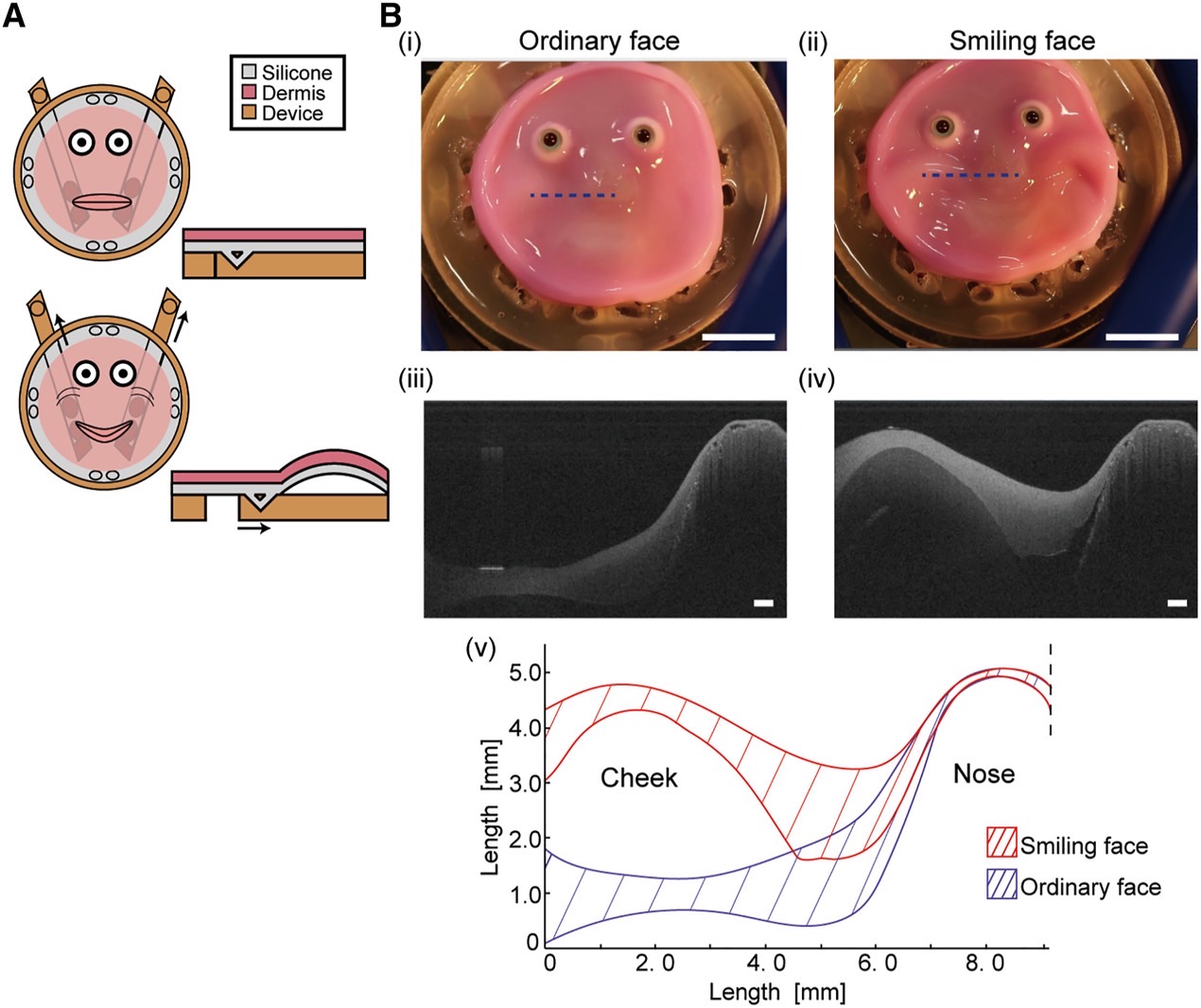Creepy Self-Healing Artificial Human Skin Might Make Robots Look Friendlier
We've all seen the movies: robots that look and behave like humans are among us, and chaos ensues. Most of the time, it's some sort of conflict between the two species, whether a full-fledged war or something less violent but equally problematic for humans. The fact that robots look like humans is almost always an issue. But those are movies.
It'll be a while before we can create such robots (or androids) in real life. We need better AI for them and components that will allow us to develop robots with human-like appearances.
Why would we need robots to look more like humans? Remember those robotic dogs that can perform all sorts of tricks while looking nothing like dogs? They look incredibly terrifying. They're pieces of metal with some brains. And they look dangerous even if most of them really aren't.
That's why researchers are already studying technology that would let tech companies manufacture robots with human-like faces. A new study from Japan details a new skin material based on human cells. The artificial skin has self-healing properties and can adhere to future robots' metallic structures. Even better, the skin material lets the robots smile, which sounds creepy, but it's better than the alternative.
According to Live Science, researchers from the University of Tokyo created artificial living skin, which they attached to a robot's face using a novel approach.
The scientists did not rely on gluing human-like skin to a robot's face, as this could cause the artificial face to sag off the robot's frame. Rather than appearing more friendly to humans, such a robot face could have the opposite effect.
Another option would be pinning the skin down with anchors, but glue would still be required. And glue could always stick out as lumps under the skin. Again, the robot faces wouldn't be exactly friendly to humans.

The Tokyo team developed a new mechanism called "perforation-type anchors." The human-like skin can extend V-shaped hooks into holes in the robot's frame, allowing the artificial skin to stick to the robot's face without sagging or developing lumps.
To ensure the skin sticks to the frame, the robot is treated with water-vapor plasma, which gives it hydrophilic properties. The skin gel is then attracted to the surface, ensuring the skin hooks are pulled into the frame's holes.
The artificial skin is made of collagen and human dermal cells. The latter adheres to the collagen during incubation, giving it skin-like properties.
Moreover, the skin would be flexible enough to let the robot express emotion. That's not to say that the underlying machinery will have feelings. AI tech is far from getting there. But companies creating robots to have them join a workforce that will include humans might want these robots to feature algorithms that let them smile, as a human would, in certain interactions.
The researchers used silicone underneath the thin skin to mimic the human muscles responsible for smiles. The following image shows how the robot wearing this skin would smile.
A video in the study shows the smile in action, with the artificial skin extending over the silicone "muscles" during the smile and then returning to the initial position. In the future, scientists might use cultured muscle tissue instead of silicon to improve the facial expressions of androids.

In a previous study, the researchers also showed that human-like artificial skin will have self-healing properties. They grafted collagen in skin tears, and the human cells proliferated to repair the opening.
This would be beneficial in environments where robots would sustain accidental damage during use. It's unclear how fast any tears in the skin would heal or how long the process would take.
After all, this isn't full human tissue powering the self-healing properties. Not to mention that human skin needs time to fix itself on humans. The researchers did not verify the self-healing abilities of the artificial skin they developed for this experiment.
Still, this development is a step in the right direction for making human-like androids of the future.
Shoji Takeuchi, from the Institute of Industrial Science at the University of Tokyo, told Live Science that additional research is needed before robots can be equipped with such skin. This will involve improving the durability and longevity of the artificial human-like skin.
The scientist addressed some of the obvious issues, providing nutrients and water to the skin, suggesting some sort of blood vessels might be needed to feed the skin.
The researchers also want to improve the skin's mechanical strength to match human skin. The artificial material will also have to be resistant to biological contamination. After all, it wouldn't benefit from a sophisticated immune system to help it kill infections. Finally, they'll want to add sensory abilities to the skin, like registering temperature and touch.
As for the ability of androids to mimic human emotions with the help of a human-like face, the researchers think their work might have an added benefit. It might lead to medical discoveries related to how human faces convey emotions.
This might improve therapies for facial paralysis and other cosmetic surgeries involving the muscles of the human face. Additional research might also explain how skin wrinkles form in humans over the years.
All of that explains why the initial samples of human-like artificial skin look so creepy in the photos from the study. We're only in the early days here. The scientists will probably be back, to paraphrase a well-known android from the movies, with more breakthrough developments in the future.
The full study is available in full in the Cell Reports Physical Science journal.
